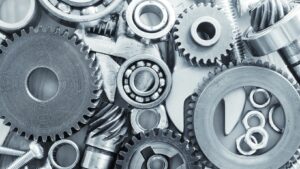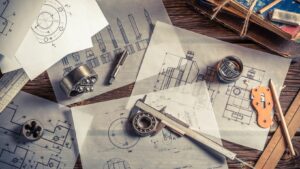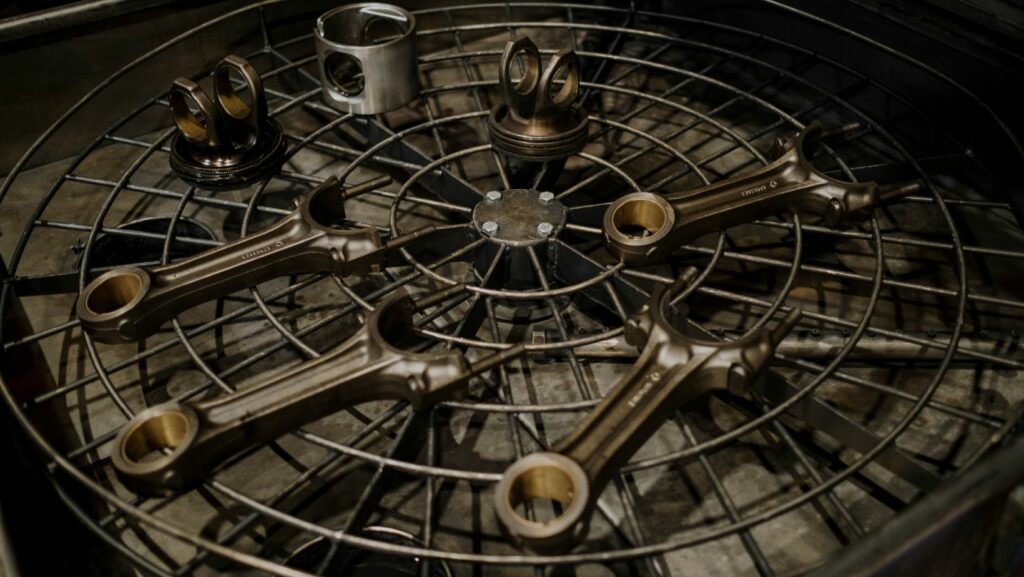Key Takeaways
- Definition of Mechanization: Mechanization refers to the process of replacing human labor with machines to boost productivity and efficiency in various industries, which began during the Industrial Revolution.
- Historical Innovations: Key inventions such as the cotton gin, steam engine, and assembly lines significantly transformed production methods, increased output, and reshaped the economic landscape in the U.S.
- Impact on Labor Dynamics: Mechanization shifted the workforce from agrarian jobs to urban factory positions, leading to the development of new skills, labor unions, and ultimately modern labor practices.
- Urbanization Effects: The rise of mechanized industries prompted mass migrations to urban areas as individuals sought employment, driving significant urbanization during the Industrial Revolution.
- Modern Mechanization: Today’s mechanization includes advanced technologies like automation, robotics, and IoT, which continue to refine processes and impact job markets while boosting efficiency and productivity.
- Economic Growth: Mechanization enhances industrial output and reduces production costs, contributing to economic growth, improved trade capabilities, and the emergence of high-skilled labor demands.
Mechanization transformed the landscape of American industry and agriculture, marking a significant shift in how work was performed. This process involved replacing manual labor with machines, drastically increasing productivity and efficiency. From the cotton gin to assembly lines, mechanization not only revolutionized production methods but also reshaped the workforce and economic structures throughout U.S. history.
Understanding mechanization’s definition and its historical context reveals its profound impact on society. It drove urbanization, altered labor dynamics, and sparked innovations that laid the groundwork for modern industry. As America embraced mechanization, it set the stage for the technological advancements that define the nation today. Exploring this evolution offers valuable insights into how machines have shaped the American experience.
Mechanization Definition US History
Mechanization refers to the process of replacing human labor with machines to increase productivity and efficiency in various industries. It began in the late 18th century during the Industrial Revolution and fundamentally transformed agriculture, manufacturing, and transportation sectors in the United States.
Mechanization introduced innovations, such as the cotton gin, which revolutionized cotton production by significantly increasing processing speed. Mechanized farming equipment, like tractors and combine harvesters, enabled farmers to cultivate larger fields with less effort, boosting crop yields and reducing labor costs.
Mechanization also altered labor dynamics, creating a shift from agrarian work to factory jobs. Many individuals migrated to urban areas seeking employment in mechanized industries. This movement accelerated urbanization and redefined the American workforce, prompting the development of new skills and labor policies.
Mechanization’s advancements fostered a competitive industrial environment. Factories embraced assembly line production, which streamlined processes and enhanced output. These changes positioned the United States as a leader in technological and industrial innovation, influencing economic growth and global standing.
Understanding mechanization highlights its crucial role in shaping America’s labor landscape and the technological advancements that define contemporary society.
Historical Context of Mechanization
Mechanization significantly shaped American industry and agriculture, forging new paths in productivity and efficiency. Its historical journey reveals key innovations and transformative changes in both sectors.
Early Innovations
 Early innovations during the Industrial Revolution marked a pivotal shift in production methods. In 1784, James Watt’s steam engine advanced manufacturing, facilitating the emergence of factories. The spinning jenny, invented by James Hargreaves in 1764, elevated textile production capabilities. The introduction of these machines led to reduced reliance on manual labor, fostering the development of a factory-based economy. Furthermore, innovations like the power loom in the early 19th century further streamlined textile manufacturing, shaping labor patterns and increasing output.
Early innovations during the Industrial Revolution marked a pivotal shift in production methods. In 1784, James Watt’s steam engine advanced manufacturing, facilitating the emergence of factories. The spinning jenny, invented by James Hargreaves in 1764, elevated textile production capabilities. The introduction of these machines led to reduced reliance on manual labor, fostering the development of a factory-based economy. Furthermore, innovations like the power loom in the early 19th century further streamlined textile manufacturing, shaping labor patterns and increasing output.
Agricultural Mechanization
Agricultural mechanization transformed farming practices, enhancing efficiency and crop yields. The cotton gin, invented by Eli Whitney in 1793, revolutionized cotton processing, drastically reducing labor requirements. The introduction of mechanized farming equipment, such as tractors and reapers during the late 19th century, allowed farmers to cultivate larger areas with less manpower. These advancements led to increased agricultural productivity, which not only supported growing urban populations but also spurred rural migration to industrial jobs. Mechanization in agriculture fundamentally altered the economic landscape, shifting focus from subsistence farming to commercial agriculture and significant market production.
Mechanization in the Industrial Revolution
Mechanization played a crucial role during the American Industrial Revolution, fundamentally changing production and labor practices. Key developments in this period revolutionized both industry and agriculture.
Key Developments
Key developments in mechanization included vital inventions and innovations that shaped the industrial landscape.
- Cotton Gin: Eli Whitney’s cotton gin, patented in 1794, significantly increased cotton processing efficiency, directly impacting the textile industry.
- Steam Engine: James Watt’s improvements to the steam engine in the late 18th century allowed factories to operate machinery more efficiently, expanding production capabilities.
- Spinning Jenny: Invented by James Hargreaves in 1764, the spinning jenny enabled multi-spindle spinning, greatly increasing yarn production for textiles.
- Mechanical Reaper: Cyrus McCormick’s mechanical reaper, developed in the 1830s, transformed grain harvesting, enhancing efficiency in agriculture.
- Assembly Line Production: The introduction of assembly lines in the late 19th century optimized manufacturing processes, significantly lowering production costs and time.
These innovations eliminated time-consuming manual labor and led to increased productivity in both manufacturing and agriculture.
Impact on Labor
The impact on labor during the Industrial Revolution was profound, leading to significant changes in employment dynamics.
- Shift to Factory Jobs: The rise of factories shifted employment from rural, agrarian work to urban industrial jobs. Workers migrated to cities in search of new opportunities.
- Creation of New Skills: Mechanization introduced the need for specialized skills, prompting laborers to adapt through training and education for operating complex machinery.
- Labor Organization: Workers formed labor unions in response to challenging working conditions and long hours, advocating for better wages and safer environments.
- Job Displacement: The mechanization process displaced many traditional craft jobs, requiring laborers to transition to new types of work in factories.
These labor developments significantly altered the workforce landscape, laying the groundwork for modern labor practices and policies in the United States.
Mechanization in Modern Times
Mechanization in modern times further extends the impact established during earlier industrial phases. Recent technological advancements have refined processes in various sectors, underlining a continual evolution in mechanization.
Technological Advances
 Technological advancements redefine mechanization in diverse fields today. Automation and robotics enhance manufacturing efficiency and precision. For instance, advanced robotics in automotive assembly lines streamline production and reduce assembly time. Drones and AI play critical roles in agriculture, optimizing crop monitoring and yield predictions. Innovations such as the Internet of Things (IoT) connect machines, facilitating real-time data exchange that improves operational effectiveness. Enhanced computing power supports sophisticated simulations, thereby supporting design and testing processes across industries.
Technological advancements redefine mechanization in diverse fields today. Automation and robotics enhance manufacturing efficiency and precision. For instance, advanced robotics in automotive assembly lines streamline production and reduce assembly time. Drones and AI play critical roles in agriculture, optimizing crop monitoring and yield predictions. Innovations such as the Internet of Things (IoT) connect machines, facilitating real-time data exchange that improves operational effectiveness. Enhanced computing power supports sophisticated simulations, thereby supporting design and testing processes across industries.
Economic Implications
Economic implications of mechanization significantly affect job markets and productivity. Automation increases productivity by minimizing labor costs and human error, allowing industries to produce goods at lower prices. This shift can lead to job displacement in certain sectors while creating demand for high-skilled labor in technology-driven areas. Mechanization contributes to economic growth, enabling industries to scale operations and meet rising consumer demands efficiently. Additionally, mechanization influences global trade by allowing countries to enhance export capabilities through increased production volumes and improved quality of goods.
Industry and Agriculture
Mechanization has undeniably reshaped the landscape of American industry and agriculture. The transition from manual labor to machine-driven processes not only boosted productivity but also redefined the workforce and economic structures. As innovations continued to emerge, they laid the groundwork for a competitive industrial environment that propelled the United States to the forefront of technological advancement.
In today’s rapidly evolving world, mechanization remains crucial, driving efficiency and productivity while also presenting challenges and opportunities in the labor market. Understanding this historical context highlights the profound impact of mechanization on the American experience and its ongoing role in shaping the future of work and industry.

